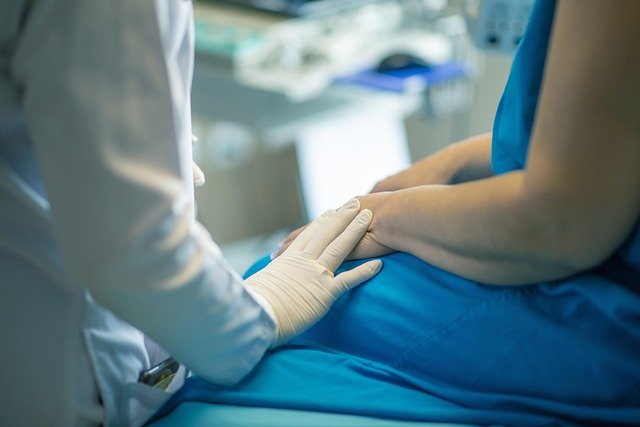Liposuction in 2025: A Global Guide to Techniques, Costs, and Quality of Care
As we move into 2025, the approach to body contouring has evolved significantly. Modern liposuction is no longer viewed as a simple fat removal tool, but as a sophisticated surgical procedure for sculpting and refining areas resistant to diet and exercise. For the global patient, the range of options has never been wider, spanning high-cost specialty clinics in the US to high-volume, JCI-accredited medical hubs. Making an informed decision requires a clear understanding of the technology, the costs, and the critical importance of surgical expertise.Liposuction continues to be a cornerstone procedure in cosmetic surgery, helping millions of people achieve their desired body contours each year. The landscape of fat removal procedures has transformed dramatically, offering patients more sophisticated options than ever before. Understanding the current state of liposuction techniques, global cost variations, and quality standards is essential for anyone considering this procedure.

The landscape of body contouring has undergone dramatic changes, with liposuction emerging as one of the most refined cosmetic procedures available today. Modern approaches prioritize patient safety, natural aesthetics, and minimal downtime while delivering transformative results that were once considered impossible.
The 2025 Technique: Beyond Suction to Sculpting
Contemporary liposuction techniques have revolutionized the field through innovative approaches that go far beyond traditional suction methods. Laser-assisted liposuction, ultrasound-assisted procedures, and power-assisted techniques now dominate the market, offering surgeons unprecedented precision in body contouring. These advanced methods allow for selective fat removal while simultaneously tightening skin and stimulating collagen production. The introduction of tumescent technique has significantly reduced bleeding and post-operative discomfort, while VASER technology enables surgeons to target specific fat layers without damaging surrounding tissues. High-definition liposuction has emerged as a premium option, allowing skilled practitioners to create muscle definition and athletic contours that appear completely natural.
The Global Cost & Quality Spectrum: A Comparative Look
The financial investment required for liposuction varies dramatically across different regions and healthcare systems. Understanding these variations helps patients make informed decisions about where to seek treatment while balancing cost considerations with quality expectations.
| Country/Region | Average Cost Range | Quality Standards | Recovery Time |
|---|---|---|---|
| United States | $3,000 - $10,000 | FDA regulated, board certification required | 1-3 weeks |
| Australia | $4,000 - $12,000 | TGA oversight, ACCS accreditation | 2-4 weeks |
| United Kingdom | £2,500 - £8,000 | GMC regulation, CQC standards | 1-3 weeks |
| South Korea | $2,000 - $6,000 | KFDA approval, specialized training | 1-2 weeks |
| Thailand | $1,500 - $4,000 | Medical tourism standards vary | 2-3 weeks |
| Turkey | $1,200 - $3,500 | Health Ministry oversight | 1-2 weeks |
Prices, rates, or cost estimates mentioned in this article are based on the latest available information but may change over time. Independent research is advised before making financial decisions.
The Crucial Comparison: Liposuction vs. Non-Surgical Options
Patients today face numerous alternatives to traditional surgical liposuction, each offering distinct advantages and limitations. Non-surgical fat reduction methods like CoolSculpting, SculpSure, and radiofrequency treatments provide gradual results without incisions or anesthesia. These procedures typically require multiple sessions and show subtle improvements over several months. While less invasive, they cannot achieve the dramatic contouring possible with surgical intervention. Injectable treatments like Kybella target specific areas but are limited to small fat deposits. The choice between surgical and non-surgical approaches depends heavily on individual goals, timeline expectations, and tolerance for downtime. Surgical liposuction remains the gold standard for significant body reshaping, while non-invasive options serve patients seeking modest improvements with minimal interruption to daily activities.
The Non-Negotiable: Surgeon Skill and Accreditation
The success and safety of any liposuction procedure depend entirely on the surgeon’s expertise, training, and facility accreditation. Board certification in plastic surgery or dermatology represents the minimum qualification standard, with additional fellowship training in body contouring providing enhanced expertise. Accredited surgical facilities must meet strict safety protocols, maintain emergency equipment, and undergo regular inspections. Patients should verify surgeon credentials through official medical boards and review before-and-after photographs of similar cases. Experience with specific techniques matters significantly, as newer methods require specialized training and equipment. The consultation process should include detailed discussions about realistic outcomes, potential complications, and post-operative care requirements. Transparency about costs, revision policies, and follow-up care indicates professional integrity and patient-focused practice.
Understanding the 2025 Patient Journey: It’s a Process
Modern liposuction treatment extends far beyond the surgical procedure itself, encompassing comprehensive pre-operative preparation and structured recovery protocols. Initial consultations now include advanced imaging technology that allows patients to visualize potential outcomes through computer modeling. Pre-operative requirements may include medical clearances, lifestyle modifications, and nutritional guidance to optimize healing. The surgical experience has been refined through improved anesthesia techniques, enhanced monitoring systems, and streamlined procedures that reduce operative time. Post-operative care involves compression garments, lymphatic drainage massage, and progressive activity guidelines designed to minimize swelling and optimize results. Recovery timelines vary based on the extent of treatment, with most patients returning to desk work within a week and full activities within a month. Follow-up appointments monitor healing progress and address any concerns that arise during the recovery period.
The evolution of liposuction continues to advance through technological innovation, refined techniques, and improved safety protocols. Success depends on careful surgeon selection, realistic expectations, and commitment to post-operative care guidelines. As the field progresses, patients benefit from increasingly sophisticated options that deliver natural-looking results with enhanced safety profiles and reduced recovery times.
This article is for informational purposes only and should not be considered medical advice. Please consult a qualified healthcare professional for personalized guidance and treatment.




